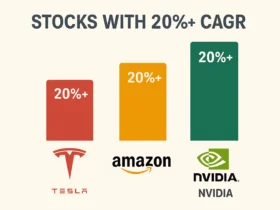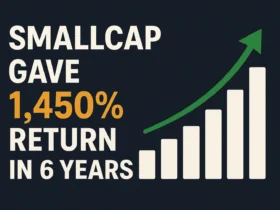The world of cryptocurrency is always changing. The relationship between Ethereum (ETH) and Bitcoin (BTC) is especially interesting. A big question is: How have Bitcoin exchange-traded funds (ETFs) changed the ETH/BTC ratio? What does this mean for digital asset markets?1
Recently, the cryptocurrency market has grown a lot. Bitcoin’s price has gone over $97,000 and is close to $100,0001. But Ethereum’s value hasn’t risen as much. The ETH/BTC ratio is now at a three-year low of 0.0321. Analyst Georgy Slavin-Rudakov says this drop is because of Bitcoin spot ETFs1.
Ethereum might go up to $3,600 or $4,0001. But more investors are choosing Bitcoin over Ethereum. This shows Bitcoin is more popular now1.
Key Takeaways
- Bitcoin’s price has surged to over $97,000, driven by expectations of a crypto-friendly Trump administration.
- The ETH/BTC price ratio hit a three-year low of 0.032, indicating Bitcoin’s dominance and the impact of spot Bitcoin ETFs.
- Ethereum faces competition from Solana and Bitcoin as a smart contract platform and store of value.
- Investors are shifting funds from Ethereum to Bitcoin, reflecting a preference for the leading cryptocurrency.
- Regulatory changes and macroeconomic factors are shaping the crypto market dynamics.
Table of Contents
Understanding the ETH/BTC Ratio Fundamentals
The ETH/BTC ratio is a key metric for comparing Ethereum (ETH) and Bitcoin (BTC) in the crypto market2. It shows how much Ether is worth compared to Bitcoin. Traders use it to see how these two big cryptocurrencies are valued against each other, not just against regular money2.
Historical Performance and Key Metrics
The ETH/BTC ratio has changed over time due to different market factors2. If the ratio goes up, it might mean more people want Ethereum. But if it goes down, it could mean Bitcoin is getting more popular again2.
When Ethereum gets better, like handling more transactions, people get more confident in it. This can make the ETH/BTC ratio go up2. Also, if more people start using Ethereum services, it can make ETH more valuable, raising the ratio2.
Market Indicators and Trading Patterns
Things like interest rate changes and world events can affect the ETH/BTC ratio2. If other cryptocurrencies grow a lot, it might change how people see Ethereum and Bitcoin2. Also, what governments decide can make traders more or less confident, which can change the ratio2.
How people feel about the market and their guesses about what will happen also play a big role2.
Price Correlation Analysis
As of July 2024, the ETH/BTC ratio has been mostly positive, with big gains in 2016 and 20173. But, it has seen smaller losses in 2022, 2023, and 20243. The introduction of Bitcoin and Ethereum ETFs in 2024 has also influenced the ratio3.
“Historically, the ETH/BTC ratio has fluctuated due to varying market factors, reflecting the dynamic relationship between Ethereum and Bitcoin.”
In summary, the ETH/BTC ratio is key for seeing how Ethereum and Bitcoin do in the crypto market2. It’s affected by many things, like how Ethereum improves, how it’s used, what governments decide, and what people think2. By looking at the ETH/BTC ratio, we can understand more about the blockchain world2.
Current Market Dynamics in 2024
The altcoin market has changed a lot in 2024. Now, more tokens are less liquid, with many becoming “zombie coins.”4 This shift has made the altcoin market more deep compared to Bitcoin’s, but mostly for the top ten tokens by market cap4.
The top 30 to 40 altcoins have seen a drop in liquidity. This trend is expected to continue with over $155 billion in token unlocks coming up4. This shows how digital currency investment strategies and the altcoin market are changing.
Bitcoin is still a big player, with its market cap dominance at 73% when including Ethereum and stablecoins, a 6% increase year-to-date4. The ETH/BTC ratio has fallen below 0.04, the lowest since April 2021. This shows a drop in Ether demand, with investors preferring Bitcoin5. Yet, Ethereum leads in active developers and user base, showing its key role in the market4.
As the digital currency world keeps growing, investors and analysts need to watch the altcoin market closely. They should look for new chances and plan their moves. The focus on a few tokens, the shift in Bitcoin and Ethereum preferences, and the effect of token unlocks will shape the future of digital currency investments.
Impact of Bitcoin ETF Approvals on Market Structure
The launch of Bitcoin ETFs in January 2024 has changed the cryptocurrency trading scene6. The SEC’s approval led to a huge increase in ETF volumes, hitting almost $10 billion by March6. Also, BTC ETF inflows have been in the billions, making them the top ETFs ever6.
Institutional Investment Flows
Institutional investors quickly took to Bitcoin ETFs for their ease and liquidity6. They use brokerage accounts to buy these ETFs, adding them to their portfolios for better risk management6. Retail investors also started buying, using similar methods as stock trading6.
Market Sentiment Changes
The approval of Bitcoin ETFs has boosted market sentiment6. There was a big jump in Bitcoin transfer volumes after the approval, showing more investor interest6. Bitcoin’s price also went up, with 11 ETFs trading on the first day, showing the market’s quick reaction6.
Trading Volume Analysis
The ETF approvals have changed trading patterns and volumes in digital asset markets6. There’s been a big increase in Bitcoin transactions over $1 million, showing more institutional money coming in6. Also, the share of BTC traded during US hours reached a record high from January to early October 2023. This share has dropped for ETH, showing less interest in ETH futures6.
| Metric | Impact |
|---|---|
| Bitcoin ETF Daily Volumes | Surged to almost $10 billion in March 20246 |
| BTC ETF Inflows | Exceeded billions of dollars, making them the most popular ETFs6 |
| Bitcoin Transaction Volume | Significant growth in transfers exceeding $1 million, highlighting institutional inflows6 |
| Share of BTC traded during US hours | Hit an all-time high between January and October 2023, while declining for ETH6 |
The approval of Bitcoin ETFs has been a major change for cryptocurrency trading and digital asset markets6. It has brought in a lot of investment from both institutions and individuals, changing how the market works6. As rules keep changing, investors need to stay alert and know about tax and security issues in the world of cryptocurrency trading6.
ETH/BTC Ratio: Bitcoin ETFs
Spot Ethereum ETFs launched in July 2024 got mixed reviews. They didn’t stop the ETH/BTC ratio from falling over summer7. Ethereum rose 19% against Bitcoin in the last week7. But Ether now trades around $3,600, 26% lower than its peak in November 20217.
Ethereum’s market share fell from over 20% in 2021 to 13%7. The lack of staking in ETH ETFs makes them less appealing than Bitcoin ETFs8. The ETH/BTC ratio hit its lowest since April 2021, below 0.04, showing less interest in ether8.
Bitcoin is outperforming Ethereum due to different product offerings7. Spot Ethereum ETFs saw $133 million inflows in the last three days7. Their total assets under management have surpassed $10 billion for the first time7.
Inflows to spot Ethereum ETFs almost matched those to Bitcoin ETFs7. November was the most successful month for spot ether ETFs, with $745 million in monthly inflows7.
The ETH/BTC ratio is now 0.038, much lower than its 2017 peak of 0.087. Ether would need to rise another 130% against Bitcoin to reach $8,30078. Over five years, the ETH/BTC ratio rose from 0.02 to over 0.08 in early 20228. Bitcoin’s dominance fell from 62% to 59% in the past week7.
| Metric | Value |
|---|---|
| ETH/BTC Ratio | 0.038 |
| ETH/BTC Ratio (2017 Peak) | 0.08 |
| Ethereum Price | $3,600 |
| Ethereum Market Dominance | 13% |
| Bitcoin Dominance | 59% |
Spot Ethereum ETFs didn’t change the ETH/BTC ratio much. Bitcoin ETFs still get more inflows than Ethereum ones9. Bitcoin ETFs got $15.1 billion in net inflows from launch to June 15, 20249.
ETH ETFs are expected to see 20-50% of BTC ETF net flows, aiming for 30%, or $1 billion/month9. The differences in Bitcoin and Ethereum, like no staking rewards, might lower Ethereum ETF interest9. Yet, Ethereum spot ETF approval and growing institutional crypto adoption could lead to more ETH/BTC ratio changes9.
Institutional Adoption Trends
The digital asset markets are changing fast, with big players joining in. North America has seen a big jump in on-chain value, reaching $1.3 trillion from July 2023 to June 2024. This is about 22.5% of the global crypto market activity10. Also, 70% of North America’s crypto activity is over $1 million, showing big players are really involved10.
The United States is leading in the crypto world10. It ranks fourth in the global adoption index, showing the U.S. is a big player in crypto10. The U.S. has seen a lot of interest in spot bitcoin ETPs, with the iShares Bitcoin Trust (IBIT) being very popular10. Also, U.S. bitcoin ETFs have attracted investors from all over, like Asia, Europe, and Latin America10.
Bitcoin has been a big hit in big trading platforms and with wealth advisors. But Ethereum’s growth has been slower10. This shows a more careful approach to Ethereum and other altcoins10. Yet, the interest in ETPs like BTC and ETH is growing, which could lead to more people using crypto and blockchain technology10.
The U.S. market has been more volatile than global markets10. Big financial institutions in the U.S., like Gemini and BlackRock, are helping to bring traditional finance and cryptocurrencies together. They do this by providing the needed infrastructure and investment products10.
Regulatory changes and politics have also affected the crypto markets11. The Nasdaq Crypto Index™ (NCI™) went up 4.8% in the first week of December, beating BTC and just behind ETH11. U.S. spot ether ETFs have seen positive inflows for ten days in a row, showing more interest in Ethereum11. The Nasdaq index has also gone up by 55.8% since the U.S. elections, showing strong support for crypto11.
These trends show how the digital asset markets are changing and how big investors are playing a bigger role1011. As the industry grows, we can expect to see more ways for traditional finance and crypto to work together. This could open up new chances for both small and big investors.
“The convergence of traditional finance and cryptocurrencies is a significant trend that will shape the future of the digital asset markets.”
Regulatory Environment and Its Effects
The rules around blockchain and digital currencies are changing a lot. This change is big for the crypto market12. With Gary Gensler leaving the SEC, people think things will get easier for crypto13. The U.S. elections might also change rules, making things clearer for Ethereum and other digital assets12.
SEC Stance on Crypto Assets
The SEC, under Gensler, has been very strict with crypto rules. They’ve taken action against over 140 crypto firms recently13. This strictness has made things tough for the industry, as investors want clear rules13. But, a change in the SEC’s view could bring new chances for blockchain and digital currencies12.
Global Regulatory Framework
Crypto rules are different all over the world12. Some places, like Canada, have okayed Ethereum ETFs12. But others are more careful, making rules uneven12. This unevenness affects how people use and value digital assets, showing why watching rules closely is key12.
Future Policy Implications
As crypto grows, rules will be very important13. The start of crypto ETFs shows the market is getting more serious12. But, different rules in different places can be hard for investors and the market12. Figuring out these rules will be key for blockchain and digital currencies to work well together12.
Trump Administration’s Influence on Crypto Markets
The incoming Trump administration has sparked excitement in the crypto world. President-Elect Donald Trump aims to make the U.S. the “crypto capital of the world.”14 This promise has boosted investor interest in Bitcoin and other digital assets. The shift in politics could also lead to better rules for trading and investing in cryptocurrencies.
Bitcoin and Ether ETFs saw huge inflows in November. $6.5 billion went into Bitcoin ETFs, and $1.1 billion into Ether ETFs15. Ether ETF subscriptions hit a record high, showing a 5.43% increase in the top coins15. This surge shows investors are more confident, thanks to Trump’s expected pro-crypto stance.
Trump plans to keep the U.S. Bitcoin holdings and not sell them. He also wants to fire SEC Chairman Gary Gensler and create a “Bitcoin and crypto presidential advisory council.”14 Trump also aims to mine all remaining Bitcoin in the USA, showing his support for cryptocurrencies14..
The crypto market has grown by over 40% since the election on Nov. 516. Bitcoin, Ethereum, Solana, Tether, and XRP have seen price changes. This growth is linked to Trump’s win, as investors hope for better rules for cryptocurrency trading and digital asset markets.
“The crypto market has seen a surge of about $1.2 trillion since Trump became president-elect.”15
The positive mood is seen in the Ether ETFs’ $333 million inflow on November 2915. Also, 77% of Ether open interest on Derive.xyz is bullish, more than Bitcoin’s 66%15. XRP also saw a big jump, hoping for Trump’s regulatory changes15..
The crypto world is looking forward to the Trump administration’s impact. A more supportive regulatory environment and more institutional investment could start a new growth phase in the crypto markets.
Technical Analysis of ETH/BTC Performance
The ETH/BTC ratio hit lows unseen since March 2021, with a sharp drop after ETH ETFs launched in July17. Ethereum has been moving up after three months of stability, aiming for $3,600 to $4,00017. Its performance is tied to Bitcoin’s rise, with Ethereum possibly growing slower if Bitcoin keeps rising, or faster if it corrects17.
Support and Resistance Levels
Ethereum’s price has shown strength, aiming to go above $3,500 and reach $4,00017. Yet, the ETH/BTC ratio fell to $0.033, its lowest in 42 months, and Ethereum hasn’t hit its all-time high despite reaching $4,000 earlier this year17. The Parabolic SAR indicator for Ethereum is above its price, hinting at a possible trend change17.
Trading Patterns and Indicators
The ETH/BTC ratio hit its lowest since March 202117, with Bitcoin up 7.45% in the last week17. In February, the ETH/BTC ratio hit a yearly high of 0.06017. Exchange inflows for Ethereum into the top 10 exchanges were 461,901 ETH, worth about $1.50 billion17. Ethereum is currently at $3,31717. If the ETH/BTC ratio falls, Ethereum’s price might drop to $3,08317.

“The ETH/BTC ratio has shown an overall bullish trend as of July 2024, with Ethereum dominance observed in various years (2016, 2017, 2020, 2021), alternating with Bitcoin-led cycles in others (2015, 2018, 2019, 2022, 2023, 2024).”18
The ETH/BTC quote shows the exchange rate between Ethereum and Bitcoin, like traditional Forex pairs18. Changes in the ETH/BTC pair give insights into market mood and possible trading chances for traders18. Trading the ETH/BTC pair through CFDs lets traders speculate on Ethereum’s outperformance or Bitcoin’s dominance18.
The technical analysis of ETH/BTC performance shows the cryptocurrency market’s dynamic nature and the trading opportunities from the changing Ethereum and Bitcoin relationship171918.
Ethereum’s Competitive Landscape
Ethereum is facing stiff competition from Solana, which has seen a surge in on-chain trading volumes20. The Ethereum ecosystem is always innovating, which could change how people see and use Ethereum. Investors can explore Ethereum through Layer 2 solutions, which have done better than Ethereum itself20. This competition has made Ethereum do worse compared to Bitcoin and some other altcoins.
Looking at blockchain technology, Bitcoin and Ethereum together hold almost 72% of the global crypto market21. Bitcoin’s market cap is a huge $2 trillion, while Ethereum’s is $400 billion. Yet, Ethereum is still more than three times bigger than any other crypto21. Ethereum’s proof-of-stake method is better for the environment than Bitcoin’s proof-of-work, giving it a future edge20.
Even with tough competition, both Bitcoin and Ethereum are seen as good long-term investments20. Bitcoin has done better than Ethereum this year, but predicting crypto prices is hard20. Investors can get into both Bitcoin and Ethereum through ETFs, like spot Bitcoin and Ether ETFs21.
As the altcoin market and blockchain tech keep changing, it’s key for investors to watch Ethereum closely. This will help them make smart choices for their crypto investments2021.
Bitcoin’s Market Dominance Factors
Bitcoin’s strong brand and its role as digital gold have made it a leader in the market22. Unlike Ethereum, Bitcoin’s value is now seen as separate from its basic worth, much like gold22. Famous endorsements and positive forecasts from big names like BlackRock and VanEck have also helped Bitcoin’s appeal22. These elements have made Bitcoin more popular among institutions than Ethereum and other altcoins.
Store of Value Proposition
Bitcoin’s role as a store of value is a big reason for its success22. Its limited supply and decrease in value make it appealing as a digital safe-haven, like gold22. The introduction of Bitcoin ETFs has made it easier for big investors to get into digital currency23.
Institutional Preference Analysis
Institutional investors are choosing Bitcoin over other cryptos, like Ethereum22. They prefer Bitcoin for its well-known brand, stability, and clear rules22. The launch of Bitcoin ETFs has also increased big investors’ interest, shown by big money flowing into these products23. Ethereum, however, has struggled to get big investors, due to its complex value and unclear rules23.
As the world of digital currency grows, knowing why Bitcoin leads is key for investors and the industry24. The mix of Bitcoin’s value, institutional choice, and ETFs will influence the crypto market’s future222324.
Future of Layer 2 Solutions Impact
Layer 2 solutions on Ethereum’s network are growing fast, sometimes beating ETH in performance25. They make transactions quicker and cheaper. This change is big, unlike past times when ETH was the main focus25.
These solutions bring both good and bad for Ethereum26. VanEck’s Matthew Sigel says Ethereum might lose trillions of dollars in value soon26. Sigel’s data shows layer 2 networks are now getting 90% of transaction revenue, a big change from before26.
Ethereum’s supply is now growing due to high transaction fees26. Since mid-April, 318,000 ETH have been added. This change affects Ethereum’s value and its competition with other blockchains like Solana27.
The altcoin market is changing, and layer 2 solutions are key to watch27. Places like Belarus, Jersey, and Switzerland might help Ethereum recover by attracting businesses27. But, the US’s crypto rules are still unclear, causing uncertainty27.
Investors and industry folks need to stay updated on blockchain trends272526. This way, they can make smart choices and grab new chances in layer 2 solutions272526.
Investment Strategies in the Current Market
Bitcoin and Ethereum, along with other altcoins, are changing fast. Investors need to update their strategies. They should think about spreading their investments and watching out for risks in less popular coins28. They also need to keep an eye on laws, how big companies are getting involved, and big economic changes29.
Portfolio Management Techniques
It’s smart to mix Bitcoin and Ethereum in your portfolio. They don’t always move in the same way29. You should also put some money into top altcoins with good growth chances and lots of trading28. Using special funds, like ETFs, can give you a way into the crypto world without all the risk28.
Risk Mitigation Approaches
Spreading your money across different types of assets is key in crypto. This includes coins, stocks related to crypto, and special contracts29. Keeping up with new laws and knowing how they might affect your money is also important30. Using stop-loss orders and controlling how much you invest can help deal with the ups and downs29.
| Investment Platform | NerdWallet Rating |
|---|---|
| Coinbase | 5.0 out of 5.0 |
| Binance.US | 4.6 out of 5.0 |
| Kraken | 5.0 out of 5.0 |
| Gemini | 4.8 out of 5.0 |
By mixing diversification, staying informed about laws, and managing risks, investors can do well in the crypto world. This way, they can take advantage of new chances in digital currency282930.

“The value of an investment in these funds could decline significantly and without warning, potentially to zero.”28
Market Depth and Liquidity Analysis
The world of cryptocurrency trading is changing fast. We’ve seen a big shift in how easy it is to trade altcoins. Now, the top ten altcoins by market value hold a bigger share of the market31.
Even though more altcoins are being traded compared to Bitcoin, the focus is on the big names. The top 30 to 40 altcoins are seeing less liquidity. Experts think this trend will keep going, as more tokens could flood the market31.
Let’s dive into some important stats about liquidity and trading. Ethereum spot ETFs started trading in the U.S. on July 23rd. Now, nine Ethereum spot ETFs are available, with five on the CBOE, three on the NYSE, and one on Nasdaq31.
The fees for these ETFs vary. They range from 0.15% for the Grayscale Ethereum Mini Trust to 0.25% for BlackRock and Fidelity. Franklin, VanEck, and Bitwise Ethereum ETFs charge 0.19% and 0.20%31. Experts predict these ETFs could see $15 billion to $45 billion in net inflows in the first year31.
We’ll keep an eye on how these changes affect the liquidity and depth of the cryptocurrency markets3132.
ETF Trading Volumes and Market Impact
The launch of Bitcoin and Ethereum exchange-traded funds (ETFs) has changed the game in cryptocurrency trading. Bitcoin ETFs have been a huge hit, with the biggest one, IBIT, gathering $18 billion in assets since January 202433. Ethereum ETFs, though popular, have seen less trading compared to Bitcoin ones.
Ether ETFs saw over $1.019 billion in trading on their first day, making up 23% of Bitcoin ETF’s first-day volume34. Notable Ether Futures ETFs include VanEck Ethereum Strategy ETF (EFUT), Invesco Galaxy Ethereum ETF (QETH), and Fidelity Advantage Ether ETF (FETH)34. These ETFs let investors track Ether prices without owning it, offering regulatory benefits and diversification34.
As of June 18, 2024, the total market cap of major spot BTC ETFs in the USA is over $79 billion. The GBTC ETF alone holds 619,000 Bitcoins, showing a net inflow of about $40 billion for BTC ETFs33. This influx of institutional money into Bitcoin ETFs could lead to a supply shock, affecting Bitcoin’s price33.
The SEC’s approval of Ethereum ETFs marks a step towards making crypto investments mainstream. However, the lack of in-kind creation and redemption options, along with no options trading, might limit Ethereum ETFs’ appeal35. Still, the growth of crypto ETFs, like VanEck’s Solana-Spot-ETF filing, shows a more diverse and accessible investment space for all33.
Role of Macroeconomic Factors
Macroeconomic events, like the Federal Reserve’s interest rate decisions, greatly affect digital currency investments and the cryptocurrency market36. Higher interest rates usually lower Bitcoin and altcoin prices, and vice versa36. Recently, a 50 basis point rate cut by the Federal Reserve made Bitcoin’s price jump by 14%, nearing $70,00036. This was due to better risk sentiment and strong ETF inflows36.
The current economic situation offers both challenges and opportunities for digital currency investors36. Ether’s price has dropped by 40% by early August36. The ETH/BTC ratio has also hit its lowest in over 1,200 days36. Meanwhile, the US inflation rate has fallen below three percent for the first time in nearly three and a half years36. The Producer Price Index (PPI) for July rose by just 0.1 percent, down from 0.2 percent in June36.
US retail sales surged in July, marking their biggest jump since early 202336. Single-family home construction in the US fell to a 16-month low in July36. These signs suggest a mixed outlook for digital currency investments and the cryptocurrency market37. The University of Michigan’s Survey of Consumers recorded its first increase in five months36. This could signal better consumer sentiment and more participation in cryptocurrency markets.
As macroeconomic factors continue to influence the digital currency world, investors and traders must watch these changes closely37. The US government now holds about $12 billion in Bitcoin36. Tether has $118.5 billion Tether tokens in reserve36. This shows growing institutional adoption and the need to understand macroeconomic forces in digital currencies37. The Dubai Court of First Instance’s validation of cryptocurrency payments for salaries under employment contracts36 also shows the evolving regulatory environment and its impact on digital currencies.
In conclusion, macroeconomic factors play a huge role in digital currency investments and the cryptocurrency market. As the landscape changes, staying informed and adapting to these changes is key for investors and traders to succeed in the digital currency world.
Conclusion
The performance of the ETH/BTC ratio shows the trends in cryptocurrency trading and digital asset markets. Bitcoin’s dominance is strong, thanks to its role as a store of value and growing institutional adoption. This is seen in the success of Bitcoin ETFs38.
Ethereum, however, has seen ups and downs. The ETH/BTC ratio hit a low since April 2021, with Ether not doing as well as Bitcoin this year39. Yet, Ethereum’s future looks bright, especially with the growth of Layer 2 solutions and DeFi and NFT ecosystems.
The regulatory changes and the effect of ETF launches will keep the focus on Ethereum and Bitcoin. How these assets adjust to new market conditions and tech advancements will shape their roles in the digital asset world.
FAQ
What is the current ETH/BTC ratio and how has it been affected by the launch of Bitcoin ETFs?
The ETH/BTC ratio has hit a three-year low of 0.032. This shows Bitcoin’s strong hold and the rise in Bitcoin ETF trading. The ratio fell further after ETH ETFs launched in July, unlike Bitcoin ETFs.
How has the altcoin market liquidity evolved in 2024?
In 2024, altcoin liquidity has focused on fewer tokens. Many have become “zombie coins” due to low liquidity. Despite this, the altcoin market’s depth has grown, mainly in the top ten tokens.
What impact have Bitcoin ETFs had on trading volumes and market dynamics?
Bitcoin ETFs launched in January have brought in big money from institutions. This has boosted Bitcoin’s performance. Bitcoin CME futures have seen record highs, while Ether futures remain low, showing less interest in ETH.
How has the regulatory environment affected the cryptocurrency market?
The US elections might help ETH by reducing regulatory risks, as Trump is seen as pro-crypto. Yet, global regulations keep changing, affecting both Bitcoin and Ethereum’s growth.
What factors have contributed to Bitcoin’s market dominance over Ethereum?
Bitcoin’s strong brand and its gold-like value have made it dominant. Big names and positive predictions from finance leaders have also helped Bitcoin, making it more appealing to institutions.
How have Layer 2 solutions on Ethereum’s network performed compared to ETH itself?
Layer 2 solutions on Ethereum have done better than ETH, offering new ways to invest in Ethereum. This change affects Ethereum’s value and its competition with other blockchains.
What investment strategies should investors consider in the current cryptocurrency market environment?
Investors should think about diversifying, focusing on top altcoins due to liquidity. They should also consider risks from less liquid coins. Regulatory changes, institutional interest, and macroeconomic factors all play a role.
How have macroeconomic factors influenced the cryptocurrency market?
Big economic events, like the Federal Reserve’s rate decisions, greatly affect crypto. Higher interest rates usually hurt Bitcoin and altcoins, and lower rates help.

























3 Comments